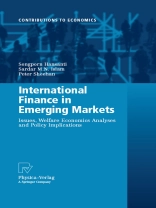This book reviews the contemporary issues in international monetary and financial economics (such as financial liberalisation, crisis, exchange rate determination, capital control, domestic capital market reform, etc.) in an emerging financial market such as Thailand from a welfare economic p- spective, highlighting the social welfare implications of these issues. This 3 book also suggests a normative social approach (as formalised in the new welfare economics paradigm) (see Islam 2001a, b for a discussion of this ; concept) for analysing and addressing these issues and formulating appr- riate policies. Undertaking the above tasks, the asymmetric information paradigm 3 and other elements of the new welfare economics paradigm are adapted in analysing the international financial issues of Thailand, their causes and economic and social welfare consequences. The last two decades have been a critical period for Thailand’s dev- opment. From the mid-1980s to the beginning of the 1990s, the Thai economy performed remarkably well and was a showcase for the world economy. Having achieved a double-digit growth rate for a brief period, Thailand in the late 1980s was regarded as the fastest growing economy in the world by the World Bank and the IMF. With prospects of further rapid economic growth, the Thai government accepted Article VIII of the IMF, which required Thailand to liberalise and deregulate its financial system.
Tabella dei contenuti
Literature Review – The Emerging Issues.- Recent Issues in International Finance: A Literature Review.- Overview of Thailand’s Approach to Financial Liberalisation.- The Thai Experience.- Analysis of Sequencing of Financial Liberalisation in Thailand.- Capital Controls: Consequences of Financial Liberalisation.- Exchange Rate Policy and Its Consequences.- Welfare Economies, Economic Theory and Policy.- Review of Financial Liberalisation Theory and the Thai Crisis.- A Cost and Benefit Analysis Model for Globalisation: Some Social Welfare Implications of Thailand’s Globalisation Process.- Conclusions and Policy Implications.












